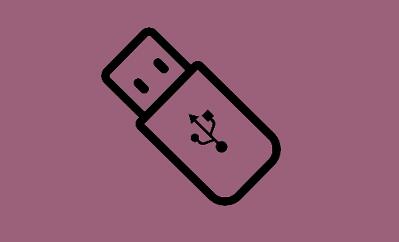Formatting a USB drive is a common task when you need to clean it, change its file system, or prepare it for a different operating system. However, formatting a drive typically involves erasing all data on it. Fortunately, there are ways to format a USB drive without losing data, although these methods involve some precautions and may require additional steps.
USB Drive Formatting
Formatting a USB drive prepares it for use by creating a file system structure. Common file systems include FAT32. NTFS, and exFAT. Each has its own benefits and limitations:
FAT32: Widely compatible but limited to files smaller than 4GB.
NTFS: Supports larger files and better for Windows systems.
exFAT: Good for large files and compatible with both Windows and macOS.
When you format a drive, you usually delete all data on it. To avoid data loss, you need to either back up your data before formatting or use tools that help you preserve the data.
Methods to Format a USB Drive Without Losing Data
Here are detailed methods to format a USB drive without losing data:

1. Backing Up Data
The safest way to format a USB drive without losing data is to back up the data before formatting. Here’s how:
Connect the USB Drive: Plug the USB drive into your computer.
Copy Files: Open the drive in File Explorer (Windows) or Finder (macOS) and copy all important files to your computer or another storage device.
Verify Backup: Ensure all files are successfully copied and accessible from the backup location.
Format the Drive:
Windows: Right-click the drive in File Explorer, select ‘Format,’ choose your desired file system, and click ‘Start.’
macOS: Open Disk Utility, select the drive, click ‘Erase,’ choose the file system, and click ‘Erase.’
Restore Data: After formatting, copy the files back to the USB drive.
2. Using Partitioning Software
Some partitioning software can help you format or reconfigure your drive while keeping data intact:
Download Partitioning Software: Tools like EaseUS Partition Master, AOMEI Partition Assistant, or MiniTool Partition Wizard can be used.
Install and Open the Software: Follow the installation instructions for the software.
Select the USB Drive: Locate your USB drive in the software interface.
Resize or Reconfigure Partitions: Use the software to resize or change partitions. This can involve formatting only part of the drive, thus preserving the remaining data.
Apply Changes: Follow the prompts to apply changes and format the selected partitions.
Note: Although partitioning software minimizes data loss risk, it’s not entirely risk-free. Always ensure you have a backup before proceeding.
3. Using Disk Management Tools
Windows and macOS offer built-in tools to manage disks and partitions:
Windows Disk Management:
Right-click on ‘This PC’ or ‘My Computer’ and select ‘Manage.’
Click on ‘Disk Management’ under the ‘Storage’ section.
Locate your USB drive, right-click on the partition, and choose ‘Delete Volume’ (if you need to format the entire drive).
Right-click on the unallocated space and select ‘New Simple Volume’ to create a new partition and format it.
macOS Disk Utility:
Open Disk Utility from the Applications > Utilities folder.
Select your USB drive from the list.
Use the ‘Partition’ tab to adjust partitions or ‘Erase’ to format the drive.
4. Using Data Recovery Tools
If your USB drive is failing or corrupted, using data recovery software before formatting can help preserve your data:
Download Data Recovery Software: Programs like Recuva, Disk Drill, or EaseUS Data Recovery Wizard can help.
Scan the USB Drive: Run the software and perform a scan to recover files from a failing or corrupted USB drive.
Recover Files: Save recovered files to a different location, like your computer’s hard drive or another USB drive.
Format the Drive: Once data is safely recovered, follow the steps for formatting the drive using Windows or macOS tools.
5. Advanced Methods
For more complex situations, such as drives with hidden or system partitions, advanced methods might be required:
Using Command-Line Tools:
Windows Command Prompt:
Open Command Prompt as an administrator.
Use the diskpart command to access the DiskPart utility.
List disks with list disk, select your USB drive with select disk X (where X is your drive number), and use clean to remove all partitions.
Create a new partition with create partition primary, format it with format fs=ntfs (or your chosen file system), and assign it a letter with assign.
macOS Terminal:
Open Terminal.
Use diskutil list to find your USB drive.
Use diskutil eraseDisk FILE_SYSTEM DISK_NAME DISK_IDENTIFIER to format the drive. Replace FILE_SYSTEM with the desired file system, DISK_NAME with your chosen name, and DISK_IDENTIFIER with the identifier of your USB drive.
Tips for Successful Formatting
Backup Regularly: Regular backups help prevent data loss.
Check Drive Health: Use diagnostic tools to check the health of your USB drive before formatting.
Choose the Right File System: Ensure the file system you choose is compatible with your intended use.
Avoid Formatting if Possible: Only format when absolutely necessary. Use tools that allow partition resizing if you only need to change partitions.
About us and this blog
Panda Assistant is built on the latest data recovery algorithms, ensuring that no file is too damaged, too lost, or too corrupted to be recovered.
Request a free quote
We believe that data recovery shouldn’t be a daunting task. That’s why we’ve designed Panda Assistant to be as easy to use as it is powerful. With a few clicks, you can initiate a scan, preview recoverable files, and restore your data all within a matter of minutes.
Subscribe to our newsletter!
More from our blog
See all postsRecent Posts
- Can not open jgp files learnosity 2025-02-24
- Klipper unable to open file 2025-02-24
- File format or file extension is not valid 2025-02-24









